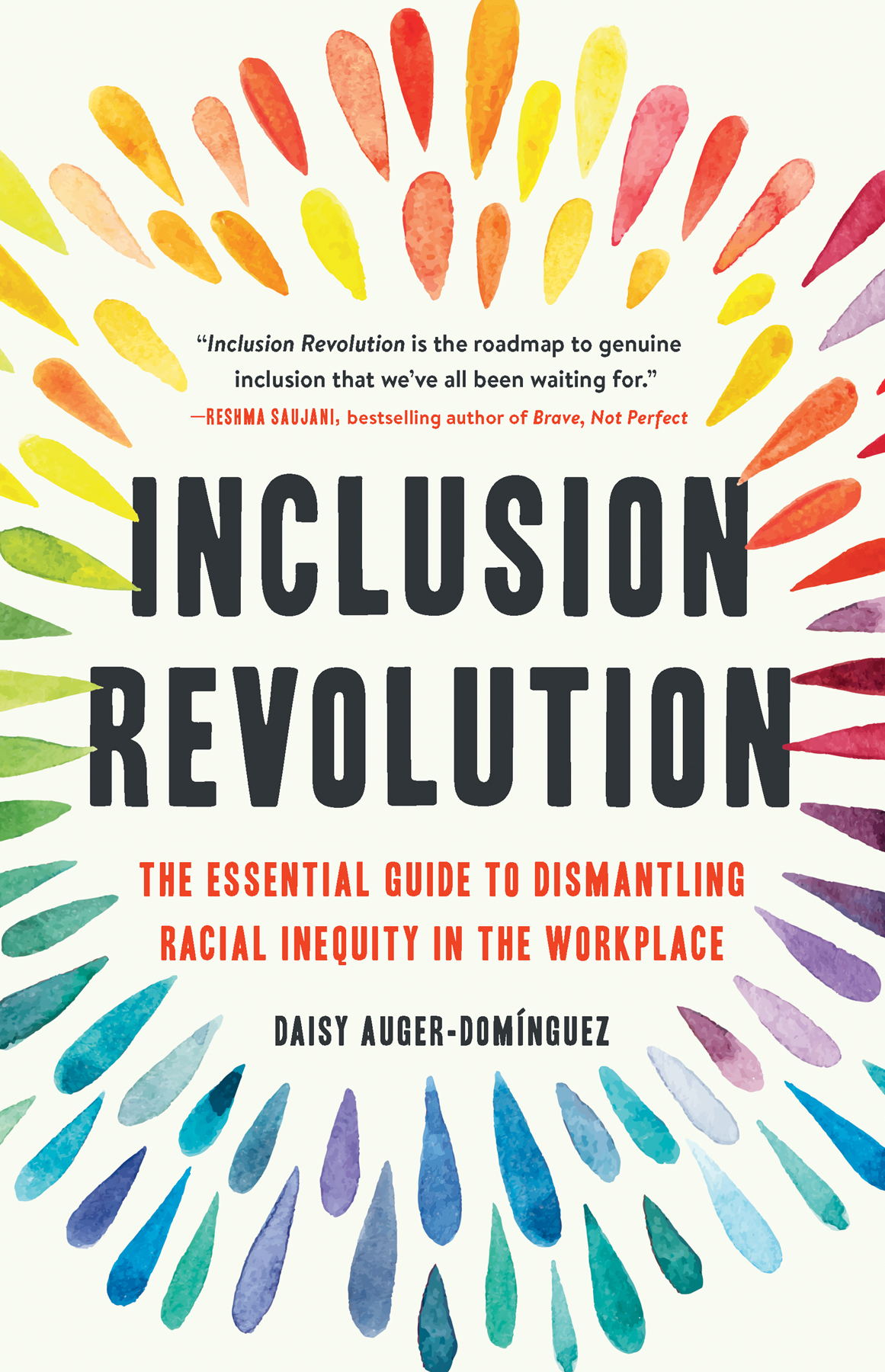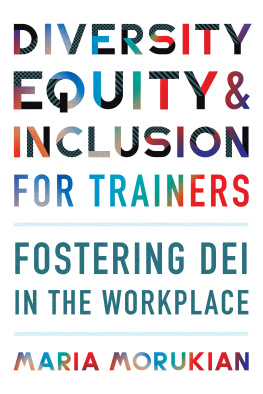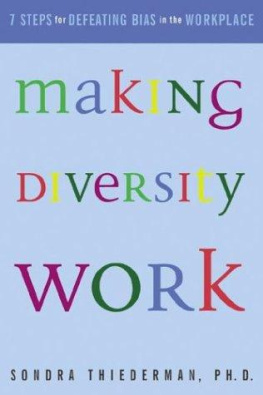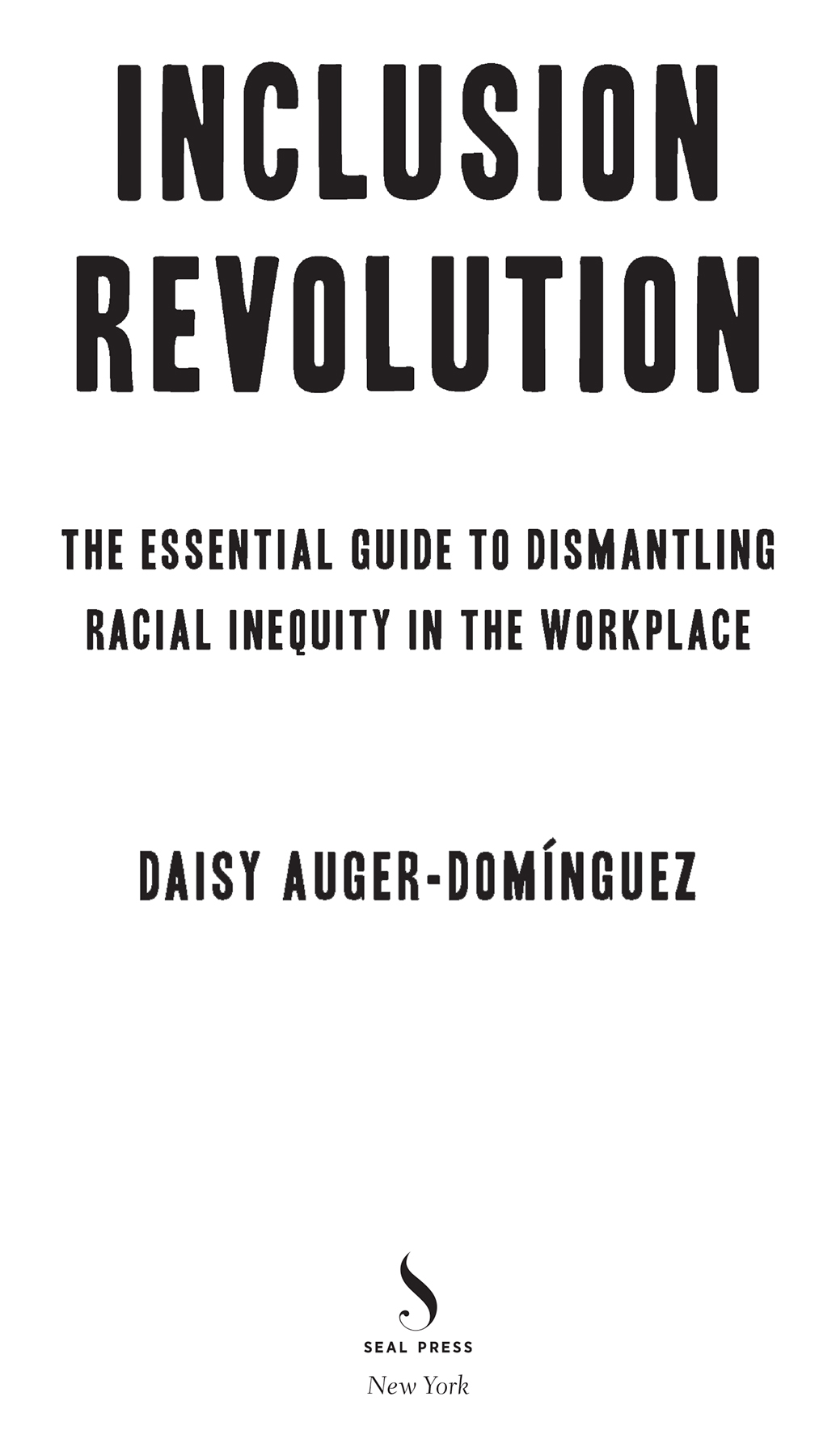
Copyright 2022 by Daisy Auger-Domnguez
Cover design by Chin-Yee Lai
Cover image Markovka / Shutterstock.com
Cover copyright 2022 Hachette Book Group, Inc.
Hachette Book Group supports the right to free expression and the value of copyright. The purpose of copyright is to encourage writers and artists to produce the creative works that enrich our culture.
The scanning, uploading, and distribution of this book without permission is a theft of the authors intellectual property. If you would like permission to use material from the book (other than for review purposes), please contact permissions@hbgusa.com. Thank you for your support of the authors rights.
Seal Press
Hachette Book Group
1290 Avenue of the Americas, New York, NY 10104
www.sealpress.com
@sealpress
First Edition: March 2022
Published by Seal Press, an imprint of Perseus Books, LLC, a subsidiary of Hachette Book Group, Inc. The Seal Press name and logo is a trademark of the Hachette Book Group.
The Hachette Speakers Bureau provides a wide range of authors for speaking events. To find out more, go to www.hachettespeakersbureau.com or call (866) 376-6591.
The publisher is not responsible for websites (or their content) that are not owned by the publisher.
Library of Congress Cataloging-in-Publication Data
Names: Auger-Domnguez, Daisy, author.
Title: Inclusion revolution: the essential guide to dismantling racial inequity in the workplace / Daisy Auger-Domnguez.
Description: First edition. | New York: Seal Press, [2022] | Includes bibliographical references.
Identifiers: LCCN 2021045105 | ISBN 9781541620124 (hardcover) | ISBN 9781541620148 (ebook)
Subjects: LCSH: Racism in the workplace. | Diversity in the workplace. | Personnel management. | Corporate culture.
Classification: LCC HF5549.5.R23 A94 2022 | DDC 658.30089dc23
LC record available at https://lccn.loc.gov/2021045105
ISBNs: 9781541620124 (hardcover), 9781541620148 (ebook)
E3-20220127-JV-NF-ORI
In memory of my late grandfather,
Ramn Arcadio Fernndez Domnguez
Te digo adis para toda la vida, aunque toda la vida siga pensando en ti.
To Christopher and Emma, siempre.
S ITTING AT A sleek white conference table, surrounded by some of the most credentialed HR executives in the world, a humming laptop in front of me and a free chai latte in my hand, I felt like Id finally arrived. I was just hired into a newly created global diversity recruitment role at Googlea role that was elevated to an executive level to recruit me specificallywith an ambitious charge to hire the most diverse talent. Here I was, a Dominican and Puerto Rican woman in leadership, recruited by arguably the worlds most powerful company to create the very change I had dreamed of as a young girl growing up in Santo Domingo. This was my moment.
My new teams mission was to build a workforce that better represented the world and Googles users, specifically by increasing the hiring rates of female, Black, and Latinx employees. We enthusiastically set out to redesign how to find, cultivate, and convert a robust and steady stream of candidates. We took a deep dive into the experience of female, Black, and Latinx software engineers and came up with a set of recommendations to be presented to company decision-makers. These recommendations included solutions for reducing bias in job descriptions and the interview process and expanding our talent markets beyond traditional target schools and companies largely lacking in racial and ethnic representation.
Minutes before I unveiled my biggest, boldest diversity hiring strategy yet, I paused to think about all the experiences, experiments, wins, and losses that led me to this moment. This had been my lifes work for nearly two decades. I was ready for this. But what happened next shattered my natural optimism. The big bets we presentedlike expanding our offices in communities rich in Black and Latinx talentwere perceived as impractical and unimaginative. This was 2016, yet these top executives werent ready to take bold action.
I presented to a room of mostly white men and women. The team leader, who was of Indian descent, and my own manager, a white man, dominated the conversation, clearly signaling to the rest of the team whose opinion mattered. What followed felt like hours of intellectual debate over the source of our inability to hire more Black and Latinx software engineers, while the leaders dismissed the changes I had proposed as not scalable or tractable enough. Finally, I nearly lost my mind when I was asked, Whats the root cause? for what seemed like the millionth time. I blurted out, R acism ! The root cause is racism. Our recruitment process was designed with a racist lens, and we need to reexamine and rebuild every stage of the hiring journey with an anti-racist lens in order to achieve different outcomes.
The room went qui-eeeet . The discomfort was palpable. It was the truth that no one wanted to hear. But it was the truth. Up until that moment, I didnt dare to speak my whole truth because I was afraid of being misjudged or penalized, like many underrepresented and marginalized employees feel every day, regardless of their place in the pecking order. I shared the truth that causes even well-intended people to become defensive and dismissive. And the room did just that.
Many brilliant Google employees before me had designed a highly efficient recruitment process to hire the worlds brightest minds. Many also had advocated for changes to enhance the companys overall people systems and culture. While the company had doubled in size and had seen increases in hiring and representation for women globally and for Black and Latinx employees in the United States, turnover rates for underrepresented employees of color remained just as high, if not higher. It was clear that the culture at Google also needed to change if we wanted to retain this talent we were working so hard to bring through our doors. However, tolerance for behavioral and operational change was low, even in an organization that brazenly set out to change the world.
There was also work to do on the personal level, but white leaders were not listening to their BIPOC (Black, Indigenous, and people of color) colleagues. Suppose youre a Black entry-level employee asking leadership to hire a more diverse workforce, help employees of color advance through the ranks, and facilitate conversations about racial inequality. Well, in that case, theres little chance leadership will listen, much less take action. That is, before now.
Theres been a sea change globally: a candid and courageous conversation about systemic racism, a reexamination of the role that race plays at work, and a call to dismantle racial injustice. We are in the midst of a global reckoning on racism, and corporations are on high alert, from the executives, shareholders, and boards of directors to employees. CEOs are hyperaware that their companiesand their public personasare one social media cycle away from reputational (and share price) oblivion.
Lets face it, in 2020 everything changedand there is no going back. We cant unsee what weve witnessed during this period of compound crises: a once-in-a-century pandemic, economic fallout, and public scrutiny to racialized violence. Black and brown people are saying, Weve had enough. We want real change. And were keeping score.
There is a need for national changes to our criminal justice system and society, and one place we can all start is taking a close look at our workplaces. Inequity in the workplace is a problem you can solve. I want you to be that leader who shines a light on others, not the one who dims it.








